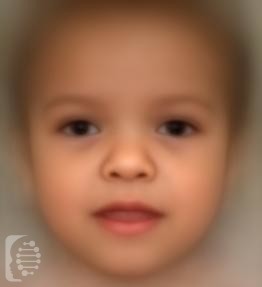What is Achondroplasia; ACH?
Achondroplasia is characterized by short-limb dwarfism. The syndrome makes it difficult for the body to convert cartilage into bone, which leads to restricted bone growth. It is the most common cause of dwarfism. Affected individuals usually have short limbs, but a normal-sized torso.
It is a congenital syndrome that is usually identified at birth. The majority of cases of the syndrome are not inherited but are the first case in a family.
This syndrome is also known as:
ACH
What gene change causes Achondroplasia; ACH?
Mutations to the FGFR3 gene are responsible for the syndrome.
80% of cases are de novo, as in the first mutation in a family. The remaining cases are inherited.
In some cases, a genetic syndrome may be the result of a de-novo mutation and the first case in a family. In this case, this is a new gene mutation which occurs during the reproductive process.
What are the main symptoms of Achondroplasia; ACH?
Short-limbed dwarfism is the most common symptom with adults rarely growing taller than 4-4.5 feet tall. A large head and forehead are also common.
Other physical characteristics of the syndrome include underdeveloped parts of the face, inward-facing and bow-legged knees, short fingers and toes, a curve of the lower back, and overcrowding of the teeth.
Individuals may also experience weight control issues as well as health conditions related to issues with their respiratory and nervous systems.
Possible clinical traits/features:
Autosomal dominant inheritance, Obesity, Recurrent otitis media, Motor delay, Flared metaphysis, Neonatal short-limb short stature, Conductive hearing impairment, Ventriculomegaly, Brachydactyly, Malar flattening, Elbow dislocation, Spinal stenosis with reduced interpedicular distance, Skeletal dysplasia, Upper airway obstruction, Spinal canal stenosis, Trident hand, Macrocephaly, Sudden cardiac death, Frontal bossing, Midface retrusion, Small foramen magnum, Acanthosis nigricans, Genu varum, Generalized joint laxity, Depressed nasal bridge, Short femoral neck, Limb undergrowth, Hyperhidrosis, Hydrocephalus, Hyperlordosis, Kyphosis, Apnea, Brain stem compression, Abnormality of the metaphysis, Abnormality of the dentition, Abnormality of the ribs, Megalencephaly, Muscular hypotonia, Rhizomelia, Abnormal form of the vertebral bodies, Infantile muscular hypotonia, Anteverted nares, Narrow chest, Neurological speech impairment, Joint hypermobility, Limited hip extension, Limited elbow extension, Lumbar hyperlord
How is it diagnosed?
To find out if someone has a diagnosis of Achondroplasia, it is important to have a consultation and evaluation with a clinical genetic specialist. Specialists may also suggest specific genetic testing or other types of tests to help reach a diagnosis. FDNA’s AI technology can help speed up the diagnostic process by analyzing facial features and other health information.

